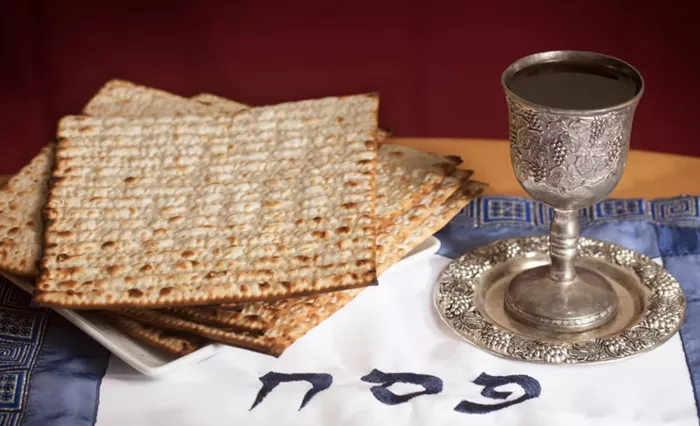The celebration of the Lord’s Passover, a pivotal event in ancient Israelite history and central to Jewish tradition, revolves around a specific day of the month. This article delves into the historical origins, biblical accounts, cultural practices, theological significance, and modern-day observance of the Lord’s Passover, offering a comprehensive exploration of its chronological placement and enduring spiritual meaning.
Introduction to the Lord’s Passover
Biblical Foundation and Historical Context
The Lord’s Passover is rooted in the biblical narrative of Exodus:
Exodus 12: Details the institution of the Passover by God to commemorate the Israelites’ deliverance from slavery in Egypt.
Chronological Setting: Occurs during the final plague upon Egypt, when the Angel of Death passed over the homes marked with the blood of the sacrificial lamb.
Significance of the Passover Lamb
The sacrificial lamb symbolizes redemption and protection:
Symbolism: Represents atonement, divine protection, and the covenant relationship between God and His people.
Ritual Observance: Involves the selection, sacrifice, and consumption of the Passover lamb according to specific instructions outlined in Exodus.
Determining the Date of the Lord’s Passover
Hebrew Calendar and Lunar Cycles
The Lord’s Passover is determined by the Hebrew calendar, which follows lunar cycles:
Nisan (Abib): The first month of the religious calendar, corresponding roughly to March-April in the Gregorian calendar.
14th Day of Nisan: Designated as the day for observing the Lord’s Passover, with preparations beginning on the 10th day.
Lunar-Solar Calendar Alignment
Adjustments ensure alignment with agricultural and religious seasons:
Interpretation: Jewish authorities interpret and calculate the date of Passover based on lunar observations and historical precedent.
Global Observance: Passover dates may vary slightly among Jewish communities due to geographical and astronomical factors.
Biblical Accounts and Ritual Observance
Exodus Narratives and Historical Accuracy
The biblical texts provide detailed accounts of Passover observance:
Scriptural Passages: Exodus 12 outlines the instructions for selecting and preparing the Passover lamb, unleavened bread (matzah), and bitter herbs.
Historical Context: Archaeological discoveries and textual analysis corroborate aspects of Passover observance in ancient Israel.
Seder Rituals and Symbolic Foods
The Passover Seder (order) includes symbolic foods and readings:
Haggadah: Recounts the Exodus story, emphasizing themes of liberation, faith, and communal identity.
Matzah: Unleavened bread symbolizes haste and humility during the Israelites’ exodus from Egypt.
See also: What Happened On The 24 Day Of The 12th Month In The Bible?
Evolution of Passover Observance
Second Temple Period and Rabbinic Judaism
Passover rituals evolved during the Second Temple period and under Rabbinic Judaism:
Temple Sacrifice: Ceased after the destruction of the Second Temple in 70 CE, shifting focus to home-based Seder observance.
Rabbinic Interpretation: Talmudic texts and commentaries provide legal and ethical guidelines for Passover observance.
Diaspora Traditions and Cultural Adaptations
Jewish communities worldwide maintain diverse Passover customs:
Sephardic and Ashkenazi Traditions: Reflect regional influences in culinary traditions, liturgical practices, and family customs.
Innovation and Continuity: Creative interpretations and modern adaptations preserve Passover’s relevance in contemporary Jewish life.
Theological and Spiritual Significance
Redemption and Freedom
Passover symbolizes themes of redemption and spiritual renewal:
Messianic Hope: Anticipates a future redemption and restoration of Israel in Jewish theology.
Universal Themes: Inspires social justice, liberation movements, and interfaith dialogue globally.
Contemporary Relevance and Global Observance
Passover resonates beyond Jewish communities, promoting religious tolerance and cultural understanding:
Interfaith Dialogue: Engages diverse faith communities in shared values of justice, compassion, and ethical responsibility.
Educational Outreach: Passover seders and educational programs foster cross-cultural appreciation and religious literacy.
Conclusion
The Lord’s Passover remains a cornerstone of Jewish identity and faith, commemorating historical deliverance and theological truths. From its biblical origins to modern-day observance, Passover embodies enduring themes of liberation, faithfulness, and communal solidarity.
By exploring the historical context, ritual practices, theological interpretations, and global impact of the Lord’s Passover, this article illuminates its profound significance in shaping religious identity, cultural heritage, and ethical values. As communities worldwide continue to celebrate Passover, it serves as a testament to faith, resilience, and the enduring legacy of divine redemption in human history.

